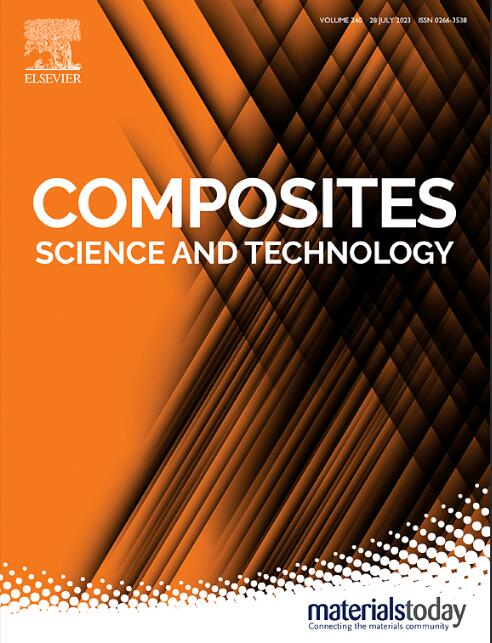High-performance boron nitride epoxy composites via dendritic amino surface modification for advanced packaging applications
IF 8.3
1区 材料科学
Q1 MATERIALS SCIENCE, COMPOSITES
引用次数: 0
Abstract
In this study, a rapid and scalable surface functionalization strategy is developed to enhance the interfacial thermal transport between hexagonal boron nitride (h-BN) fillers and epoxy matrices for high-performance thermal interface materials (TIMs). The modification process was employed: initial grafting of glycine onto BN surfaces, followed by Aza-Michael addition reactions to generate a hyperbranched polyacrylate/polyamine network. The optimized BN@G21-PA filler, when incorporated into an epoxy matrix at 30 wt%, achieved a thermal conductivity of 1.05 W/m·K, representing a 452.6 % increase over neat epoxy. Compared to unmodified BN, the interfacial thermal resistance was reduced by over 50 %, as estimated via effective medium theory. The composites also exhibited largely enhanced thermomechanical properties, including lower coefficient of thermal expansion (CTE), higher storage modulus, improved glass transition temperature, and superior rheological characteristics. Both experimentation and simulation further validated the superior cooling performance and system-level thermal management capability of BN@G21-PA composites in the performance tests on the TIMs. This work demonstrates an effective route toward next-generation polymer composites for advanced electronic packaging applications.
高性能氮化硼环氧复合材料通过枝晶氨基表面改性的先进包装应用
在本研究中,开发了一种快速可扩展的表面功能化策略,以增强高性能热界面材料(TIMs)中六方氮化硼(h-BN)填料与环氧基之间的界面热传递。采用的改性工艺是:首先将甘氨酸接枝到BN表面,然后进行Aza-Michael加成反应,生成超支化聚丙烯酸酯/多胺网络。当将优化后的BN@G21-PA填料以30 wt%的质量掺入环氧树脂基体中时,其导热系数为1.05 W/m·K,比纯环氧树脂提高了452.6%。根据有效介质理论估计,与未改性的BN相比,界面热阻降低了50%以上。复合材料的热机械性能也得到了很大的提高,包括更低的热膨胀系数(CTE)、更高的存储模量、改善的玻璃化转变温度和更好的流变特性。在TIMs上的性能测试中,实验和仿真进一步验证了BN@G21-PA复合材料优越的冷却性能和系统级热管理能力。这项工作为先进电子封装应用的下一代聚合物复合材料展示了一条有效的途径。
本文章由计算机程序翻译,如有差异,请以英文原文为准。
求助全文
约1分钟内获得全文
求助全文
来源期刊

Composites Science and Technology
工程技术-材料科学:复合
CiteScore
16.20
自引率
9.90%
发文量
611
审稿时长
33 days
期刊介绍:
Composites Science and Technology publishes refereed original articles on the fundamental and applied science of engineering composites. The focus of this journal is on polymeric matrix composites with reinforcements/fillers ranging from nano- to macro-scale. CSTE encourages manuscripts reporting unique, innovative contributions to the physics, chemistry, materials science and applied mechanics aspects of advanced composites.
Besides traditional fiber reinforced composites, novel composites with significant potential for engineering applications are encouraged.
 求助内容:
求助内容: 应助结果提醒方式:
应助结果提醒方式:


